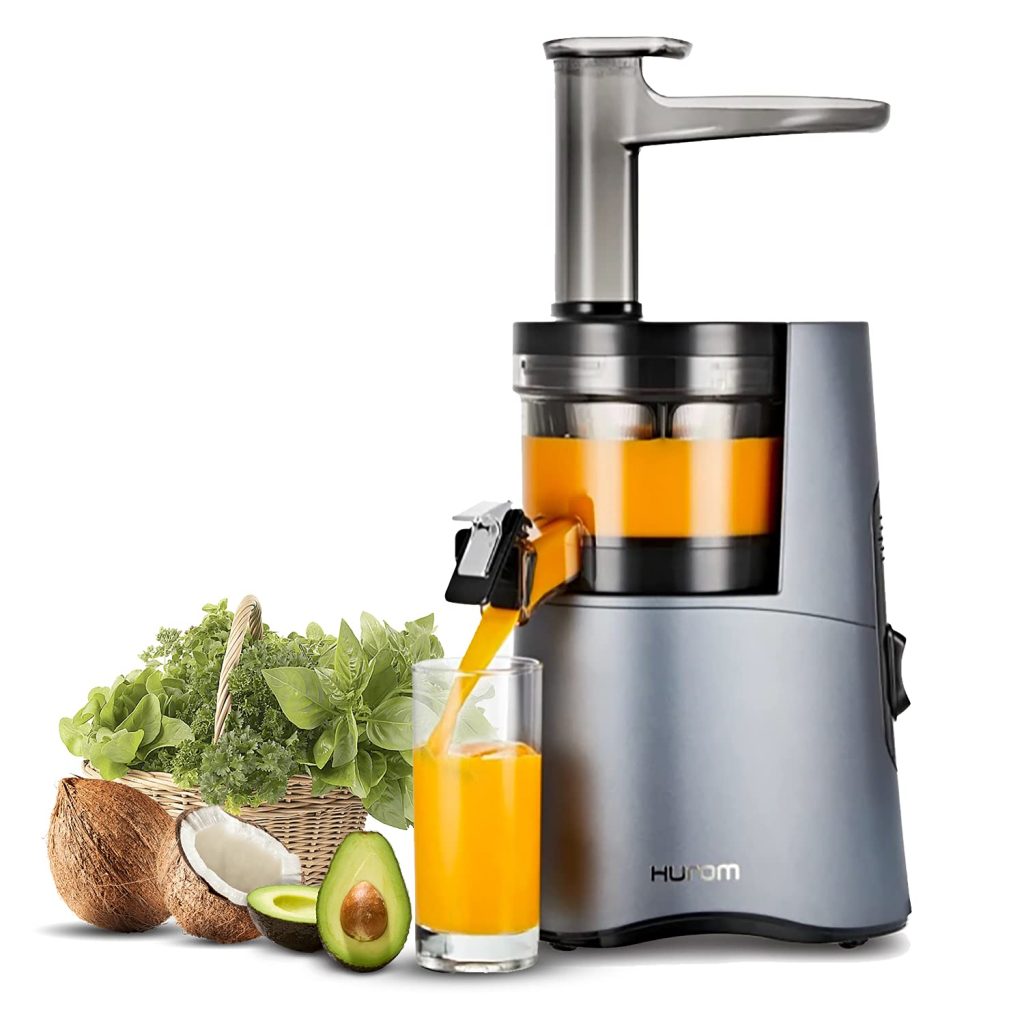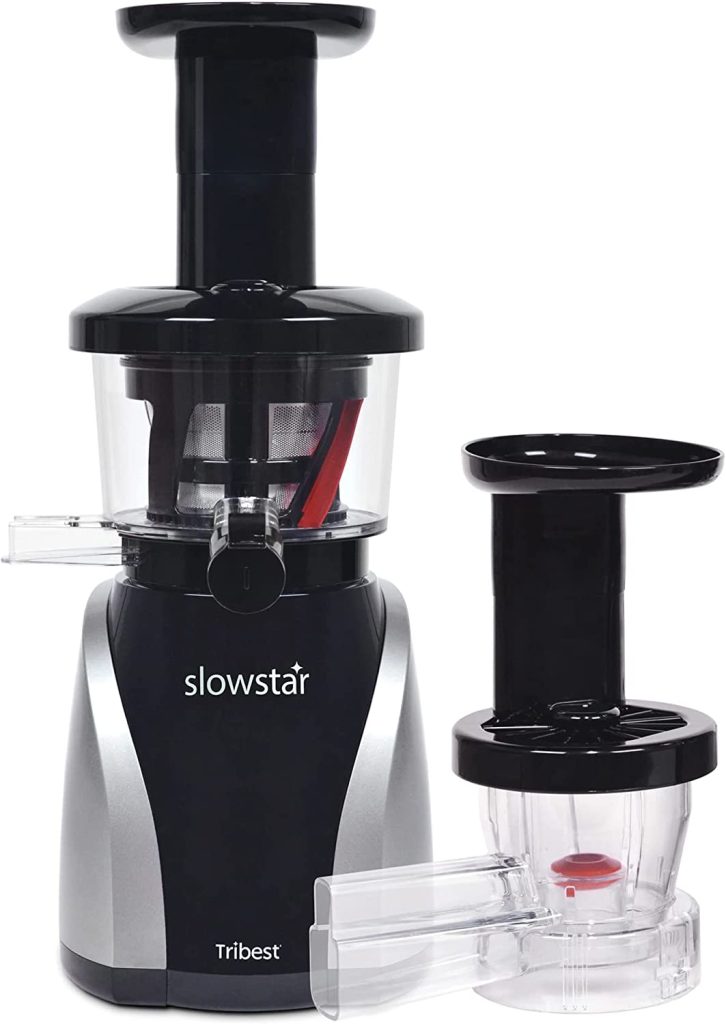Juicing is a fantastic method to eat more fruits and vegetables and provide your body with the required nutrients. However, choosing between a Centrifugal vs Masticating Juicer for your needs might be challenging, given the wide variety of juicers available. Centrifugal and masticating juicers are two of the most widely used juicers.
Masticating juicers employ a slower grinding motion to extract juice, while centrifugal juicers use high-speed blades to chop up fruits and vegetables. The best juicer for you will depend on your specific demands and tastes, as each model has advantages and disadvantages.

Centrifugal vs Masticating Juicer
We’ll examine the distinctions between centrifugal and masticating juicers to equip you better to choose the one that will serve your needs. We’ll also explore the benefits and drawbacks of each type of juicer and offer recommendations for popular juicer models.
Description of the operation of centrifugal juicers:
- Using a spinning blade, centrifugal juicers mince up fruits and vegetables.
- The pulp and juice are separated by pressing the pieces against a mesh filter.
- The pulp is discarded, and the juice is collected in a container.
Pros
- Quick and easy to use
- Can handle tough fruits and vegetables
- Usually more affordable
Cons
- Heat can reduce the nutrient content
- Less juice extraction
Top applications for centrifugal juicers:
- Centrifugal juicers are preferable for people who want to prepare juice quickly and easily and are not overly concerned with obtaining the most nutrition from their vegetables.
- They are perfect for folks who want to juice tough fruits and vegetables and water-rich leafy greens.
Models of widely used centrifugal juicers and their features:
- Popular centrifugal juicers include the Hamilton Beach Big Mouth Juicer, the Cuisinart Juice Extractor, the Kuvings B1700 Juicer, and others.
- Features may include speed settings, sizable feed chutes, and simple-to-clean parts.
Hamilton Beach Big Mouth Juicer

Cuisinart Juice Extractor

Kuvings B1700 Juicer

By discussing these themes, you’ll provide readers with a complete explanation of centrifugal juicers’ workings, advantages, disadvantages, and several well-liked models to consider.
Masticating Juicers:
Description of the operation of masticating juicers:
- Fruits and vegetables are juiced slowly and grindingly by masticating juicers.
- A gently rotating auger crushes the produce as it is pushed through a chute, separating the juice from the pulp.
- The pulp is discarded, and the juice is collected in a container.
Pros
- More efficient juice extraction
- Retains more nutrients due to less heat generation
- Versatile for creating various food items
Cons
- Slower and require more effort to use
- Can struggle with tougher produce like apples and carrots
How to use a masticating juicer?
- Masticating juicers are the best option for those who want the most nutrient-dense juice and are ready to invest more time and money.
- They are perfect for juicing fragile vegetables like wheatgrass and leafy greens.
Models of Common Masticating Juicers and Their Features:
- Popular masticating juicers include the Hurom H-AA, Tribest Slowstar, and Omega 8007.
- Multiple attachments for creating nut butter or pasta, silent operation, and easily cleanable parts are some features that may be included.
Hurom H-AA

Tribest Slowstar

Omega 8007

By discussing these issues, you’ll provide readers with a complete explanation of how masticating juicers operate, their benefits and drawbacks, and several well-liked models to consider.
Centrifugal vs Masticating Juicer:
Masticating juicers are typically slower and more difficult to use than centrifugal juicers. They work by shredding produce with a quickly rotating blade and separating the juice from the pulp. Apples, carrots, and beets are just a few examples of the hard fruits and vegetables for which centrifugal juicers are ideally suited.
On the other hand, masticating juicers take longer but yield juice of superior quality. They function by slowly grinding produce to extract the juice. For example, leafy greens, soft fruits, and vegetables like kale, spinach, and cucumber work well in masticating juicers.
Due to the long and gentle extraction procedure, masticating juicers typically yield juice with more nutrients and enzymes. However, due to the quick extraction procedure, the juice from centrifugal juicers may have a higher water content and retain fewer nutrients.
The cost should be taken into account while selecting a juicer. Contrary to popular belief, masticating juicers are typically more expensive than centrifugal juicers but also more robust and long-lasting.
The decision between a centrifugal and masticating juicer ultimately comes down to your preferences and juicing objectives. A centrifugal juicer can be your best bet if you’re searching for a quick and simple way to juice hard fruits and vegetables.
A masticating juicer might be a better option if you’re interested in juicing leafy greens and soft fruits and vegetables and are prepared to spend more money and effort to obtain juice of higher quality.
Conclusion:
Centrifugal and masticating juicers have pros and cons, so the best depends on your needs. Masticating juicers take longer but make better juice. Consider affordability, convenience, and product type while purchasing a juicer.
Juicing is a delightful and practical method to eat more fruits and vegetables and enhance your health. This essay will help you maximize your juicing experience and avoid any downsides.
Juicing should complement a healthy diet, not replace it. To maintain good health, eat various fresh, complete fruits and vegetables. Juice on!
